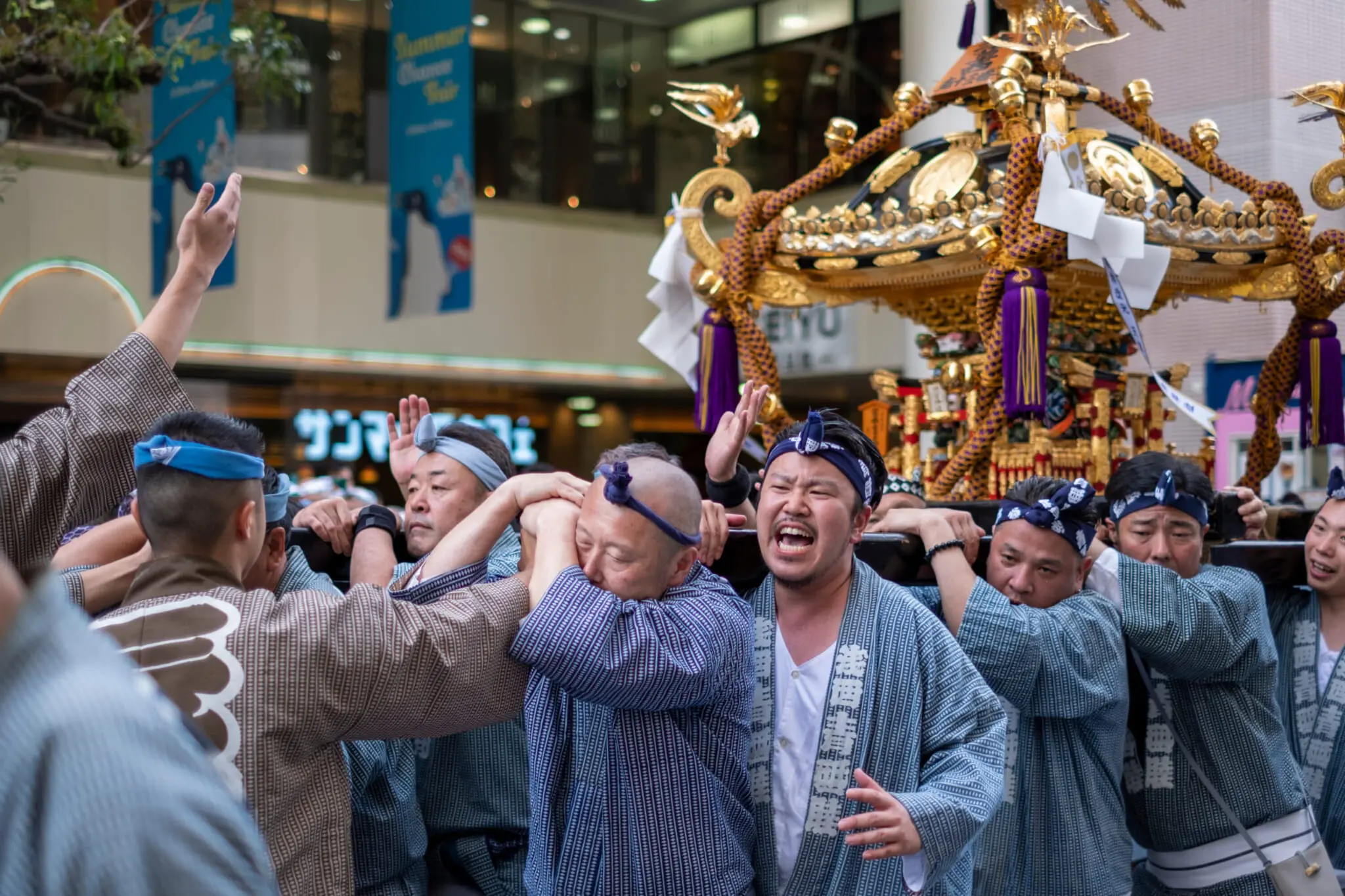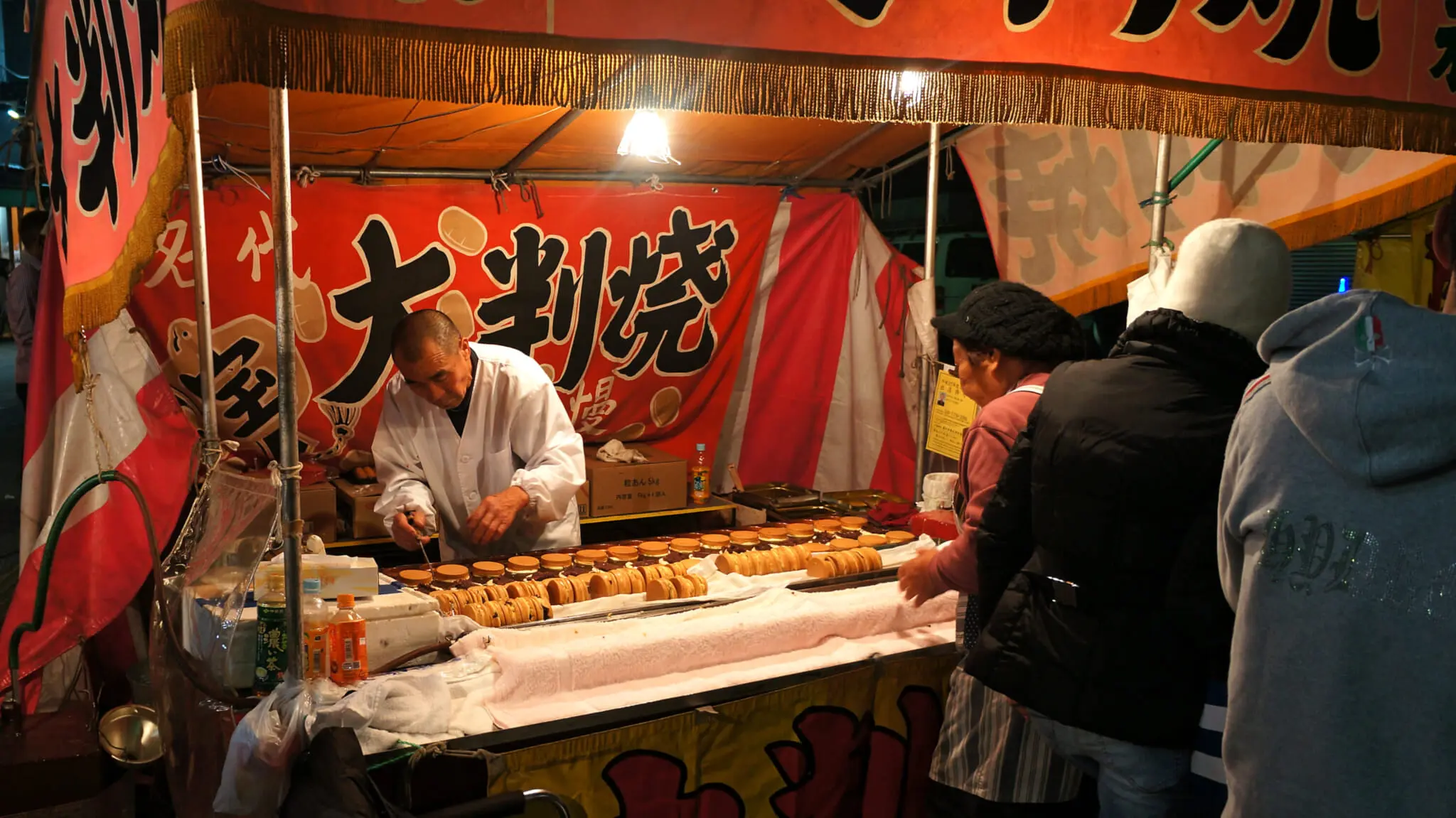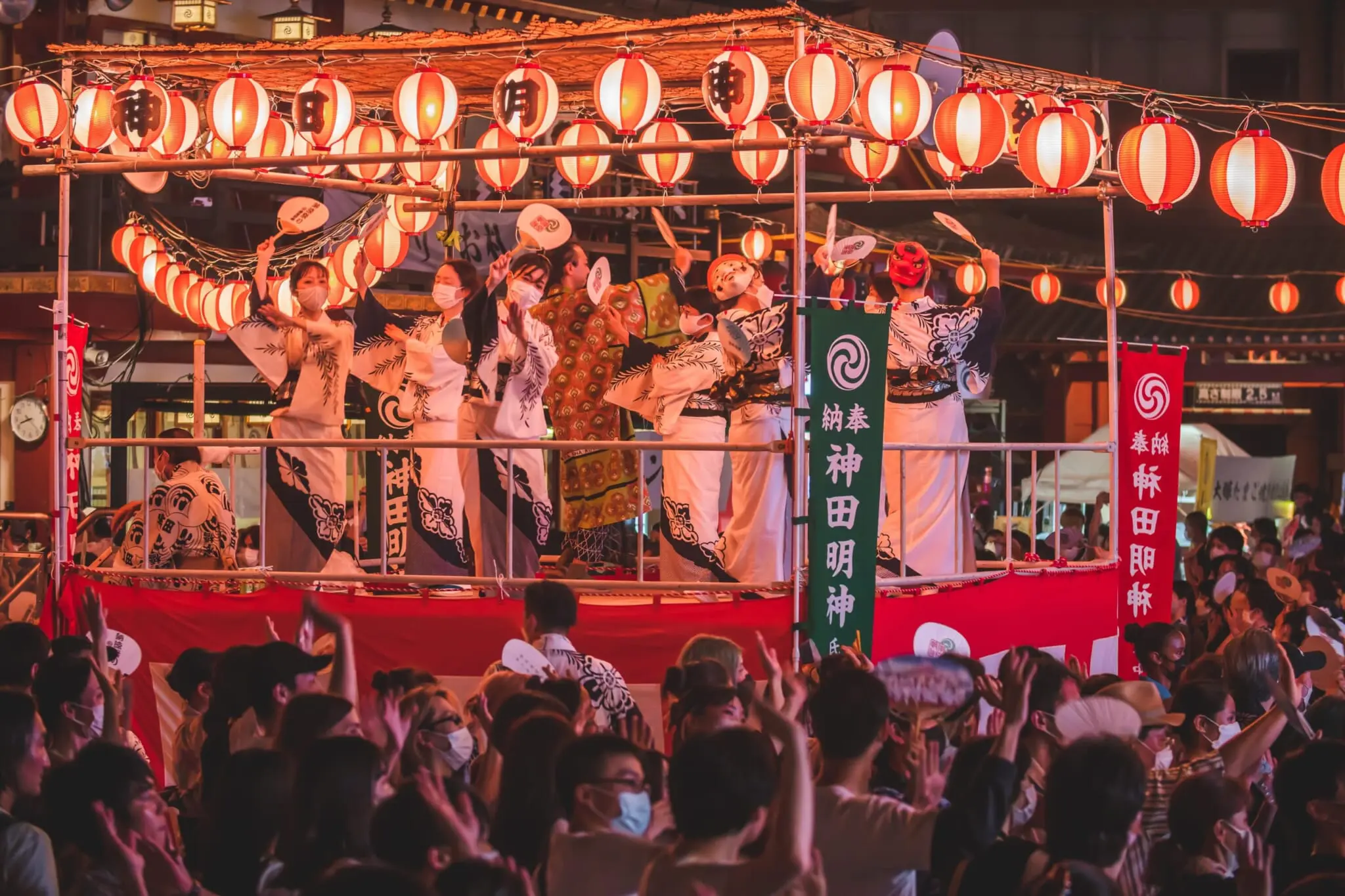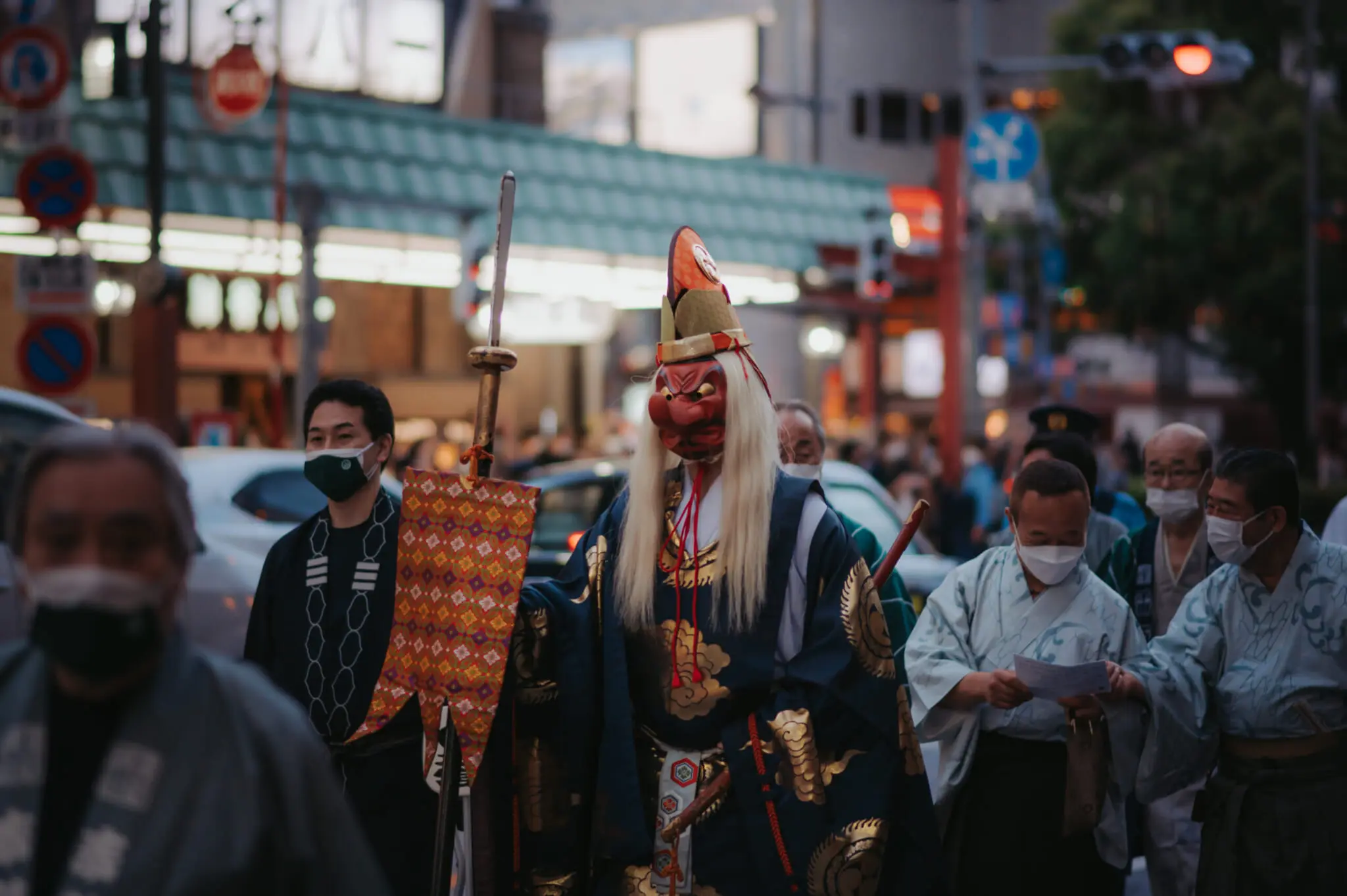Picture the scene: you’re walking back home after meeting a friend for coffee when you hear shouts and the pounding of drums. Venturing towards the commotion, you find yourself in the middle of a gaggle of uniformed locals, chanting and carrying some sort of ornate casket on their shoulders. It’s as though you’ve stepped back in time. You look around to check if it’s still the same street. It is. You spot smartphones filming the spectacle you’ve become embroiled in. Disentangling yourself from the crowd, you ask someone what on earth is happening. “It’s a matsuri, of course.”
Matsuri, the name for Japanese festivals, can appear out of nowhere. In this piece, we have a look at matsuri origins, how to prepare for them, and, how to behave during one.
 History and Origins of Japanese Festivals
History and Origins of Japanese Festivals
There are hundreds of matsuri across Japan throughout the year, but they are particularly prominent in the summer. A communal celebration, some have been around for hundreds of years in one way or another to give thanks to the Shinto gods. In fact, the word “matsuri” refers to “deity worship.”
Each matsuri has its own unique origin, which often varies depending on the region. Take the Aomori Nebuta Matsuri in Tohoku, for example, which was first held sometime during the Nara period (710–794). Giant lanterns decorated with famous characters float ominously in the air, belying the roots of a festival created to give the spirits of the dead a decent send-off. Now, it stands as one of the most famous matsuri in Japan, attracting close to 3 million visitors each year. Another famous matsuri is the Gion Matsuri in Kyoto, which lasts the entire month of July. It originated during the Heian period (794-1192), when Japan was hit by a plague. At the festival, people offered prayers for the plague to stop. Beginning at Yasaka Shrine, massive floats are wheeled around the vicinity by hundreds of locals.

Elements of a Japanese Matsuri
From the outside, it appears that some matsuri have little in common with others. But there are a few key elements that unite them all. A reason that matsuri remains popular may be because of the community spirit they uphold. Getting the residents of a neighborhood together for an event each year is a great way to boost local morale, an element that has only grown stronger in the days of smartphones, as people long for that off-screen connection.
Dancing
Dancing is a huge part of many matsuri. People dress up in yukata to perform dances together. It’s not uncommon to have dance teachers on a raised platform, performing the dances so everyone can follow along. They are often accompanied by taiko players, to get the beat going. Some of the bigger matsuri have yosakoi dance performers.
Food stalls
One of the best parts of matsuri are the food stalls. Local vendors set up stands known as yatai to serve matsuri delicacies. While these vary by region, there are some key foods that you are guaranteed to spot, no matter where you are.
Takoyaki, or octopus balls, are popular for festivals because they are super quick to make and easy to take away. For many, they are a festival favorite. Yakisoba is another staple. On the sweet side, chocolate-dipped bananas make for an excellent dessert to eat at night.
Mikoshi
Mikoshi are the carriages that take respective gods on their annual walks. After all, matsuri are for the gods, right? Mikoshi are ornately decorated caskets, with an abundance of gold and often a phoenix at the top. They are incredibly heavy but designed to be portable, with wooden beams on the bottom that go on the top of the bearers’ shoulders.

Image by KenSoftTH via Shutterstock
How to Enjoy Matsuri
For matsuri first-timers, it can be difficult to ascertain what is allowed and what isn’t. Here’s a simple lowdown.
Things You Should Do
Dance
There’s nothing like getting into the matsuri spirit than with a bit of dancing. Even people who aren’t confident in their dance skills needn’t worry, as the dances are already decided. Just follow along.
Attire
Matsuri attendees sometimes wear yukata. Anybody is welcome to get dressed up, so don’t hesitate if you’ve been wanting to try on the summer kimono. If you don’t have a yukata, that’s OK. There is no formal rule about matsuri attire, just wear what makes you comfortable — and be sure you can dance in it.
Chat With Your Neighbors
Matsuri are there to foster community spirit, which means that this is one of the few times in the year when people are open to having a chat with strangers. You may even end up drinking with some yakuza.
Things To Be Aware of
Timing
Make sure to check out the times of the processions, dances and fireworks beforehand. It’s likely to be written somewhere so you can make sure you don’t miss anything.
Transportation
Leave a bit early or be prepared to wait for transport, especially when leaving the matsuri. There’s often a huge rush at the end and lines for trains can reach far outside the station. Beat the queues and leave a little earlier.









